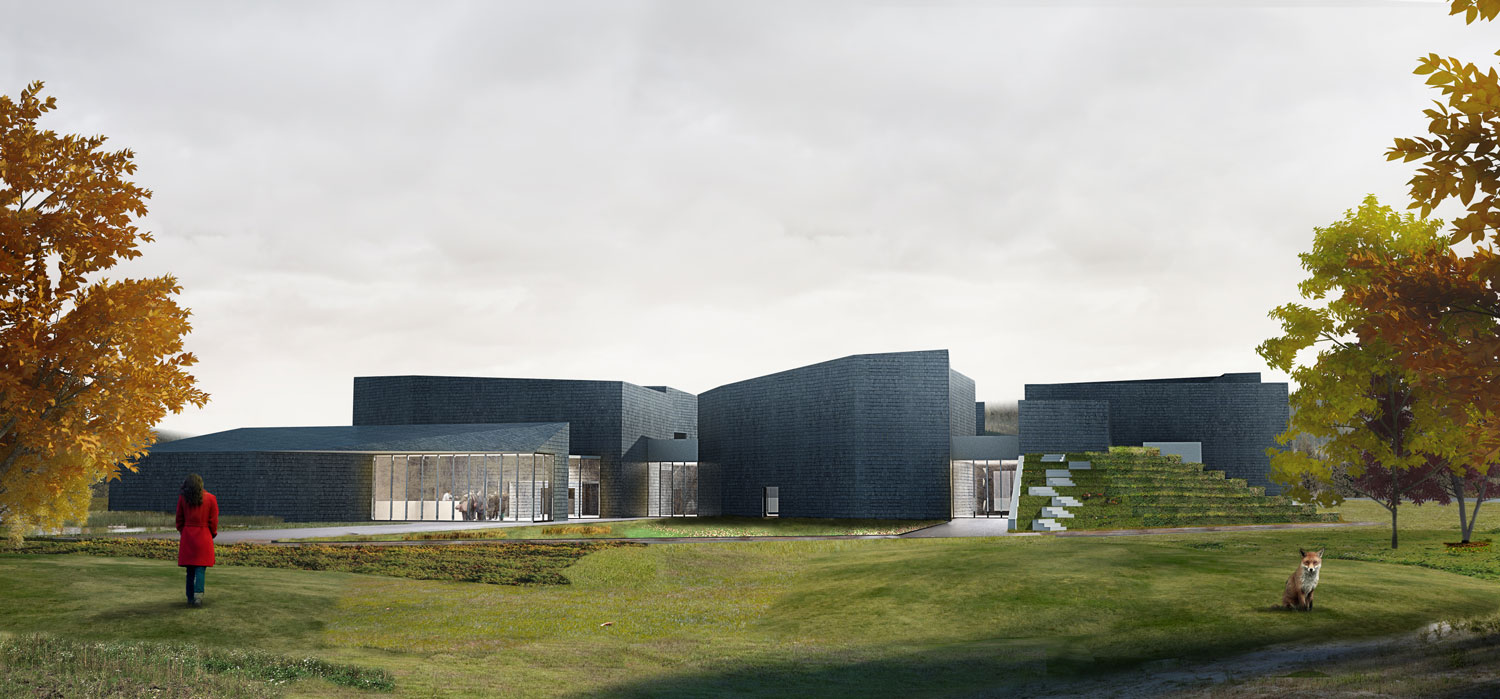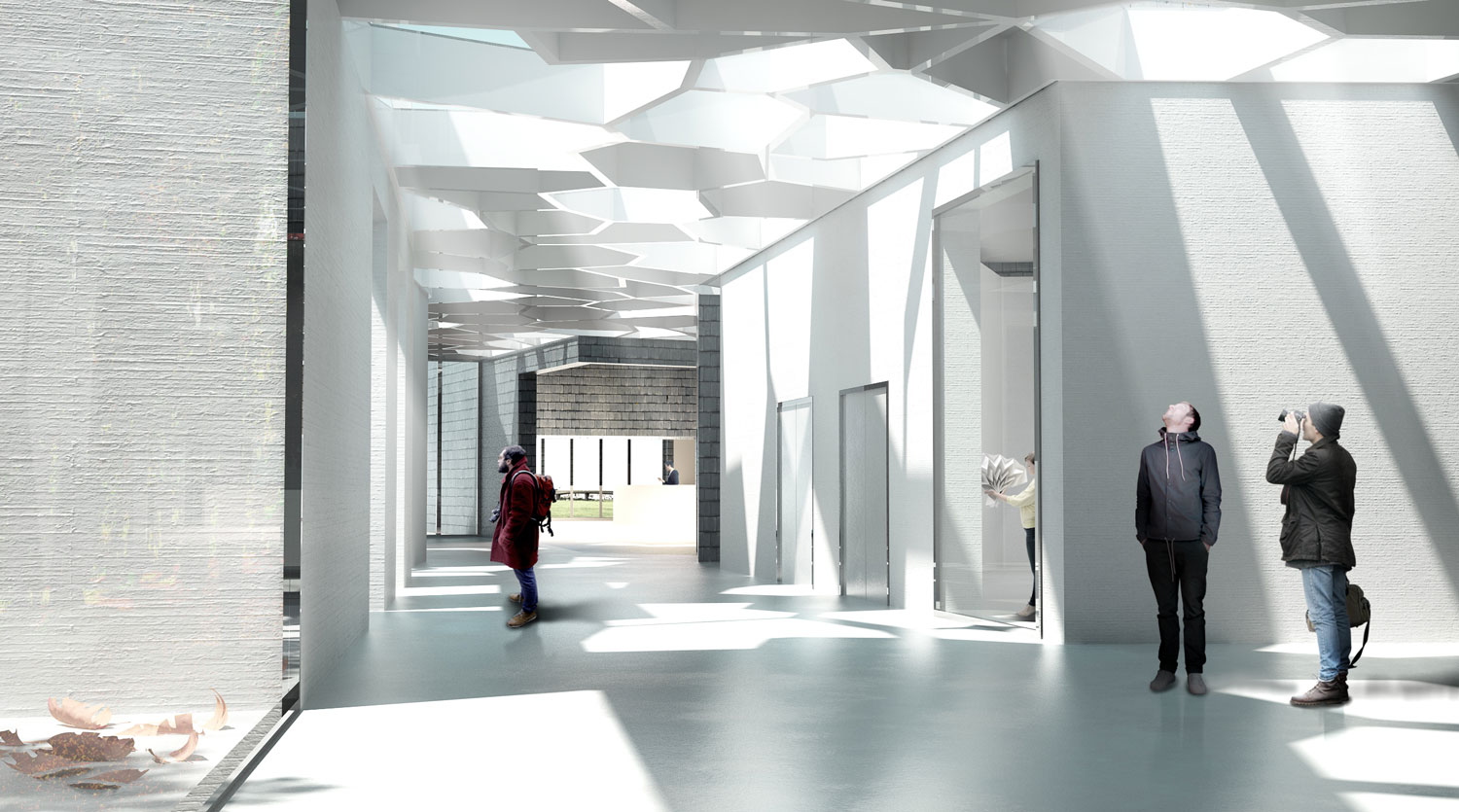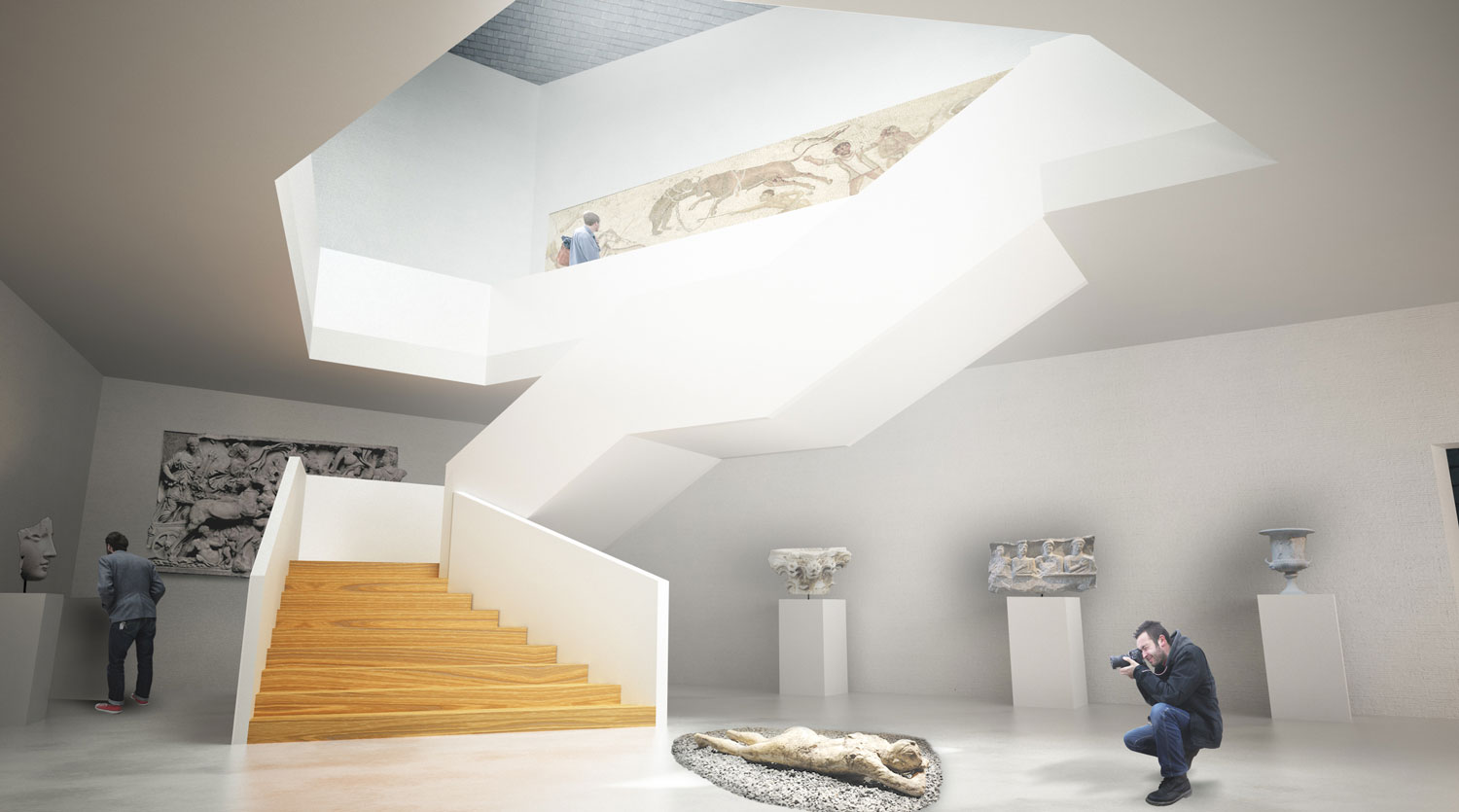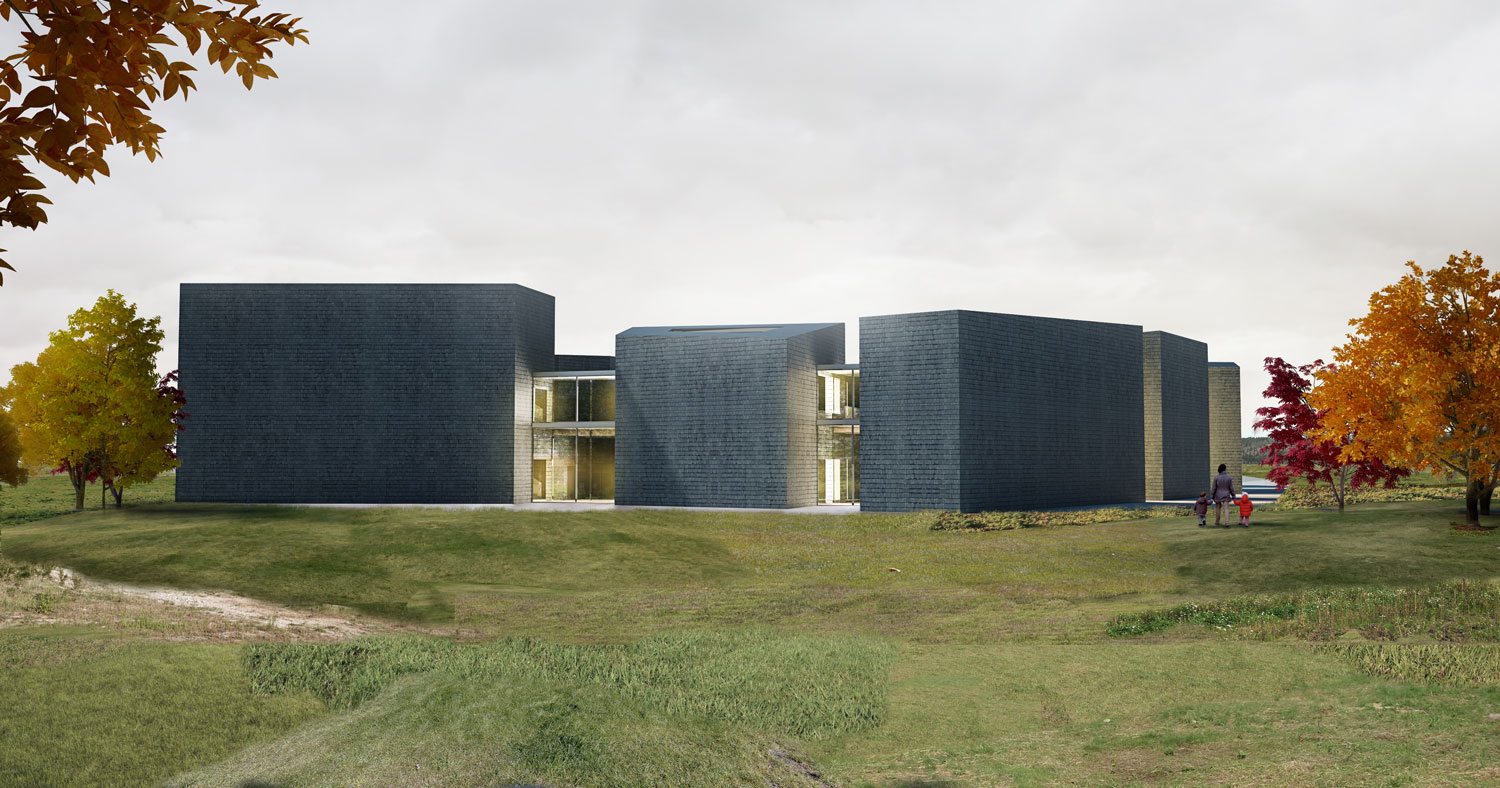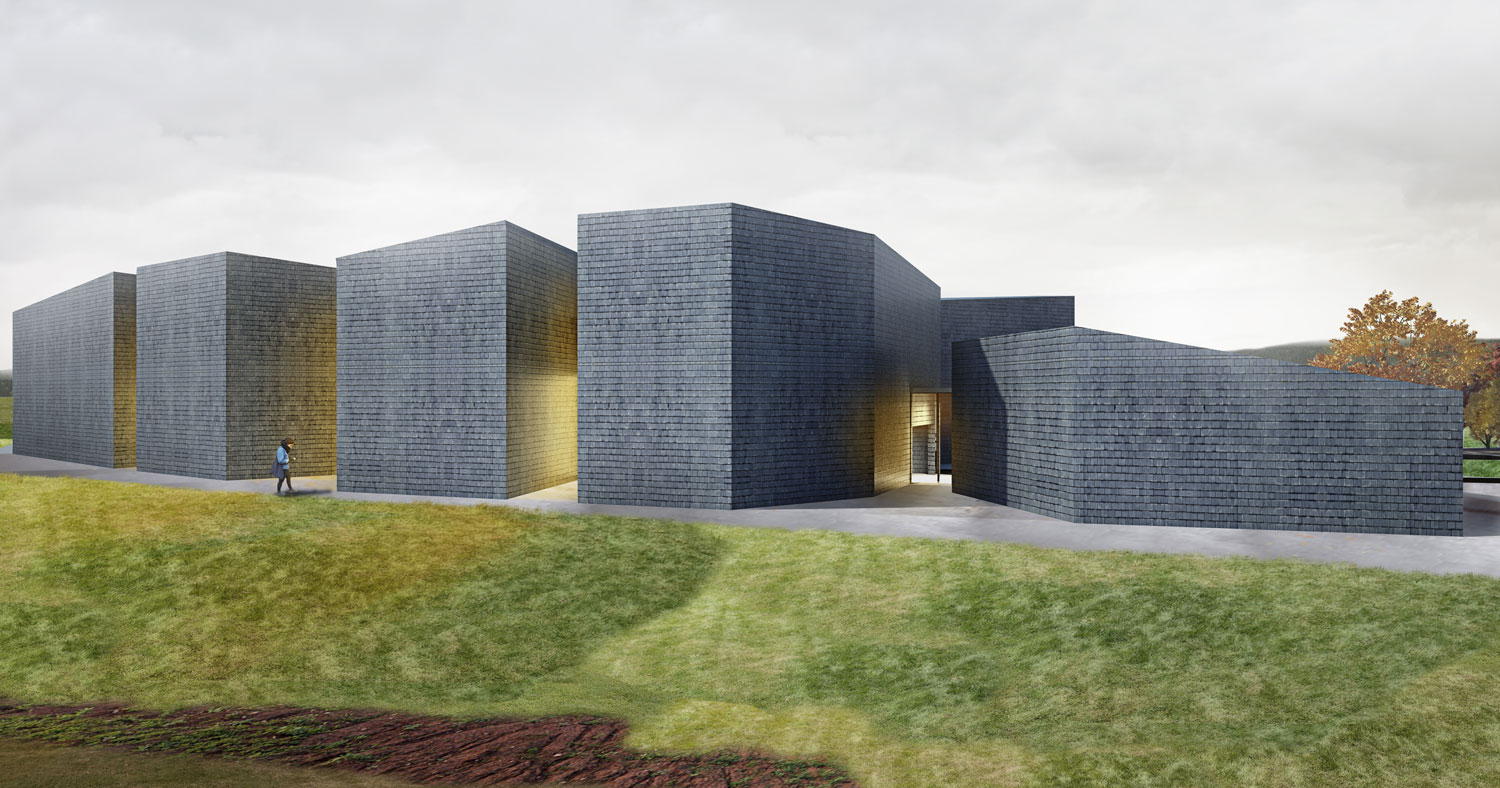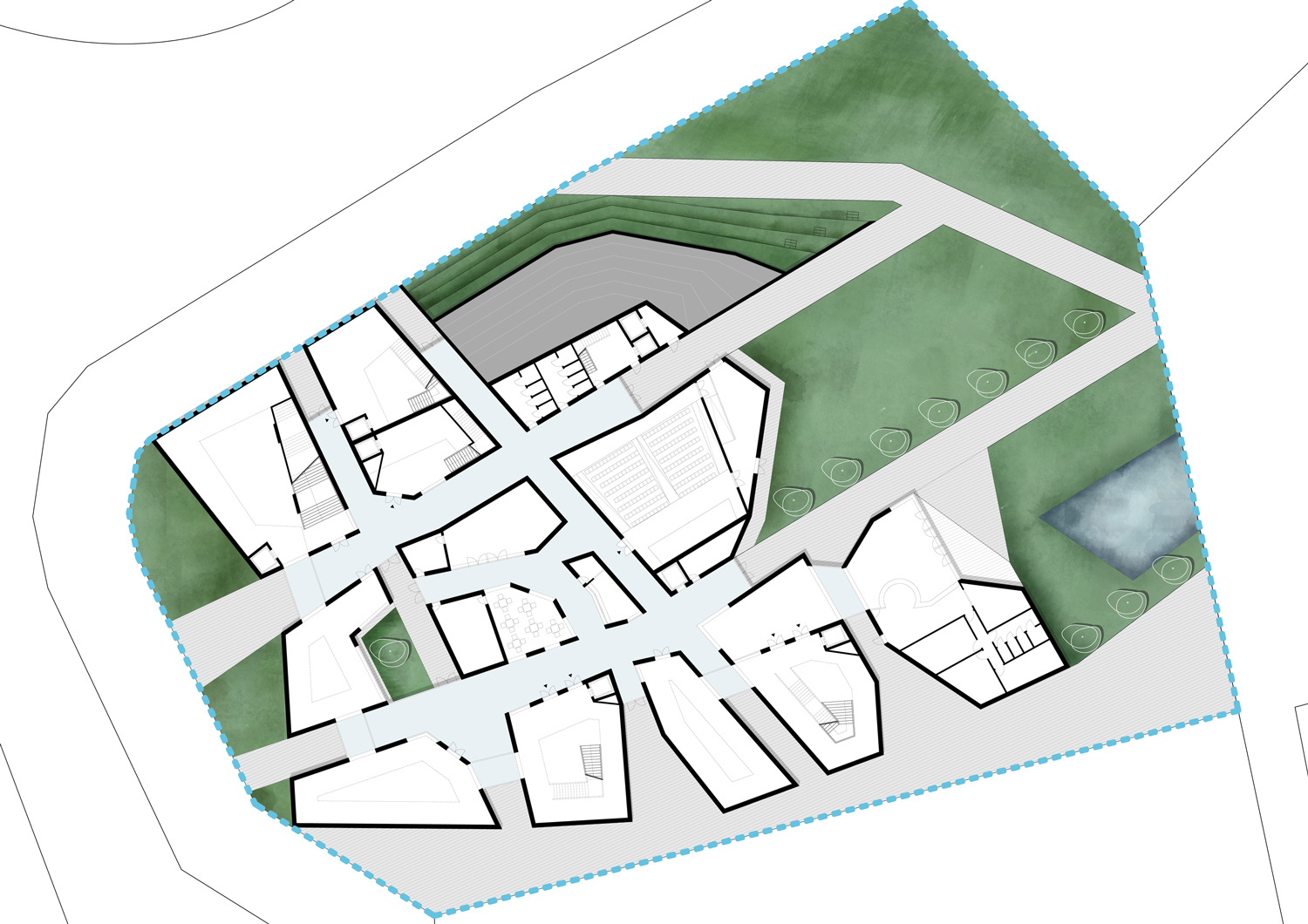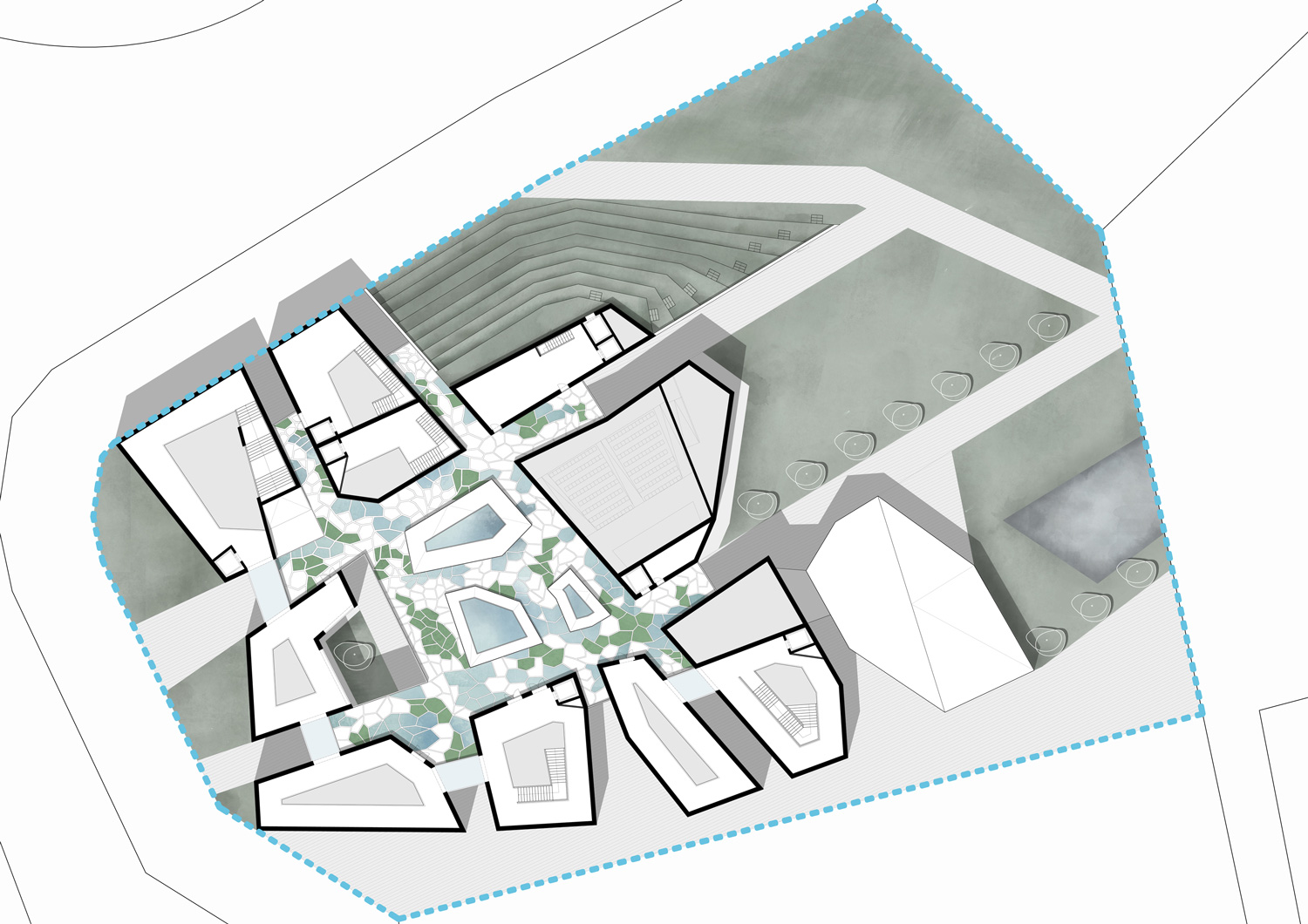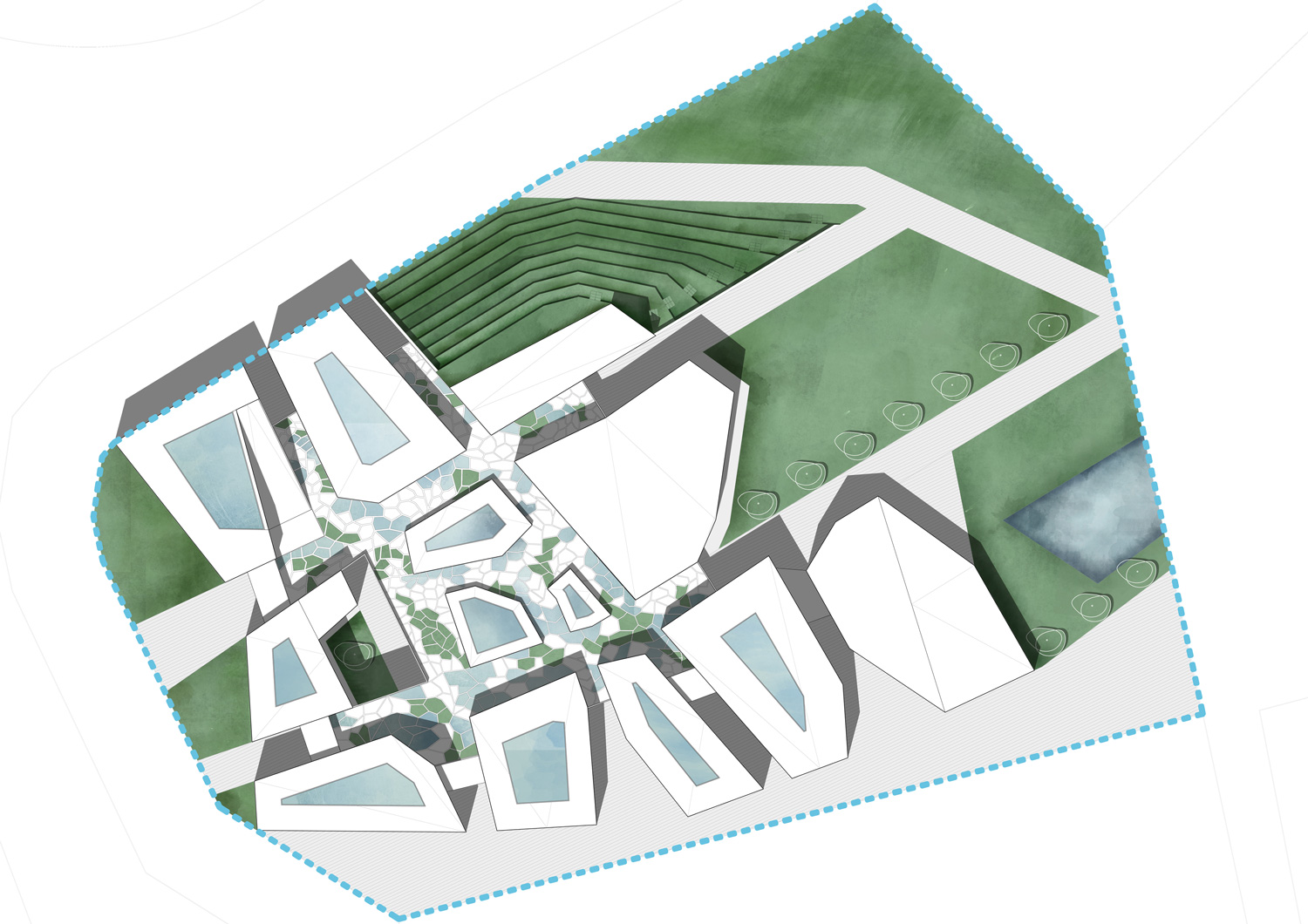1781-MLI-NAP.IT-2014
Client: Unknown
Status: Competition (2014)
Location: Naples, Italy
Coordinates: 40.750327, 14.496102
Climate: Mediterranean, Temperate
Material: Stone
Environment: Undefined
Visualizer: Studio
Scale: 3.500 ㎡ Medium
Types: Cultural, Museum
The idea is to create a museum strongly rooted in its surrounding context and the history of Pompeii.
Pompeii is directly related to the famous archaeological site, the Roman site, witness of the history of the town founded the slopes of Vesuvius. The city was built on the crossing of important roads, linking the centers of Cuma, Nola, Stabia and Nocera; in this position, as well as the proximity to the sea, Pompeii owes his fortune, as he became a central joint and obligatory passage from North to South.
The project proposal is based on two elements, strongly correlated: the study of the geometric shapes of silica slabs, paving of the Roman road, and the analysis of the context.
The Roman road, with typical blocks of basalt, dark and square, polished and made unique by the action of time, is one of the characteristic elements of the city.
The road network is another important element that distinguishes the archaeological site urban design, divided into sectors by the higher decumanus, the lower decumanus, the thistle and via Mercurio.
The volumetric articulation of the idea has been prepared with reference to the aspects mentioned above, operating a synthesis between the plastic forms of basalt blocks and the alignments of the road network of the ancient city.
The museum consists of several volumes linked together, with a lower entrance, located to the southeast, which leads to the property. The museum was conceived as a space structured with different functions, compatible with each other, the shop and the dining area in the middle, technical laboratories, the playroom and the library to the north and near the entrance to the auditorium, able to work even independently.
Museum rooms are formed from a first area, after the entrance, it consists of two rooms on two levels, for temporary exhibitions and a second for permanent exhibitions, with four rooms on two levels. The museum was conceived as a structure in which you can use all of the spaces for the various forms of art. The complex is spread over two levels, the ground floor with the connective covered by a terrace that takes the forms of basalt blocks, alternating glazed areas, pavements and green areas. Through an external green terraced steps it leads to the first level of coverage, organized as a real hanging garden.
Another characteristic feature of the proposed project is an outward visual research to connect the museum to the surrounding context of the archaeological site. Proceeding with the walk on the first level coverage is reached on the north-west building. Here we find another point of view, one of a kind, from which you can appreciate the whole archaeological complex.
The spatial organization of the museum takes into account solar orientation, exploits the chimney effect to facilitate the proper air exchange provides for the reuse of rainwater and is based on using a wall package suitable to have a good thermal inertia . The entire proposal concerns around the concept of design for all, including the design of spaces and objects to ensure that everyone can access with equal opportunities for active participation of the museum.
